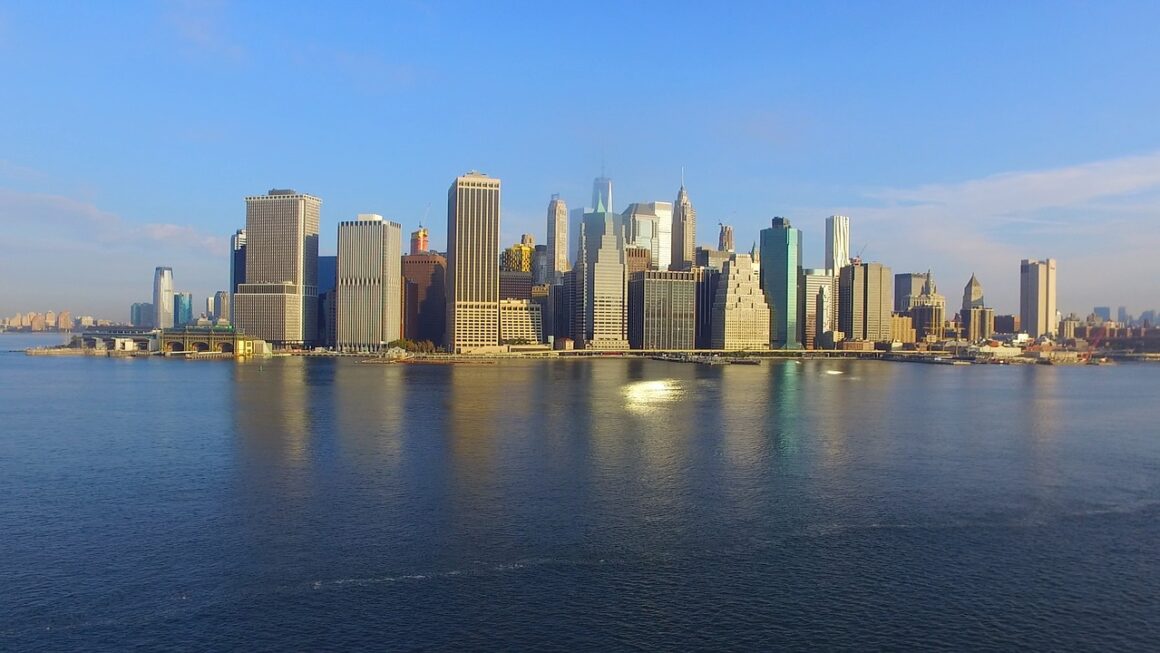Conflict zones are a stark reality in our world, characterized by violence, instability, and immense human suffering. Understanding these zones—their causes, impacts, and potential solutions—is crucial for promoting peace, security, and humanitarian assistance on a global scale. From ongoing civil wars to territorial disputes, conflict zones present complex challenges that require nuanced and informed approaches. This article delves into the intricacies of conflict zones, offering insights into their defining features, the factors that drive them, and the efforts underway to mitigate their devastating consequences.
What Defines a Conflict Zone?
Defining Characteristics
A conflict zone is typically defined as a geographical area where armed conflict, either internal or international, is actively taking place. These zones are characterized by significant levels of violence, displacement, and disruption to normal life. Key characteristics include:
- Active use of armed force between organized groups
- High levels of civilian casualties and displacement
- Widespread destruction of infrastructure and property
- Breakdown of law and order, leading to insecurity and impunity
- Significant humanitarian needs, including food, water, and medical assistance
Types of Conflicts
Conflict zones manifest in various forms, each with its unique dynamics and challenges. Understanding these different types helps in tailoring appropriate responses.
- Interstate Conflicts: Wars between two or more countries. A historical example is the Iran-Iraq War (1980-1988).
- Intrastate Conflicts (Civil Wars): Conflicts within a single country, often involving the government and one or more rebel groups. Examples include the Syrian Civil War and the conflict in Yemen.
- Non-State Conflicts: Conflicts between non-state actors, such as rival militias or criminal organizations.
- Hybrid Conflicts: Conflicts that combine elements of interstate, intrastate, and non-state conflicts, often involving a mix of state and non-state actors.
Causes and Drivers of Conflict
Political and Economic Factors
Multiple interconnected factors contribute to the emergence and perpetuation of conflict zones. Political and economic factors often play a significant role.
- Weak Governance: Corruption, lack of accountability, and ineffective institutions can create grievances and fuel discontent.
- Economic Inequality: Disparities in wealth and access to resources can exacerbate social tensions and lead to conflict. For example, competition over scarce resources like water or land can trigger clashes.
- Political Exclusion: Marginalization of certain ethnic, religious, or social groups from political participation can breed resentment and lead to violent resistance.
- Resource Scarcity: Competition over natural resources, such as oil, minerals, and arable land, can be a major driver of conflict, particularly in regions with weak governance.
Social and Identity Factors
Social and identity factors, often intertwined with political and economic grievances, also play a crucial role in fueling conflict.
- Ethnic and Religious Tensions: Historical animosities and discrimination based on ethnicity or religion can be easily exploited by political actors to mobilize support and instigate violence.
- Nationalism and Identity Politics: Extremist ideologies that promote the superiority of one group over others can lead to exclusion, discrimination, and ultimately, conflict.
- Historical Grievances: Unresolved historical injustices and traumas can continue to fuel resentment and contribute to ongoing conflict.
External Influences
External actors, including neighboring countries, international organizations, and global powers, can significantly influence the dynamics of conflict zones.
- Foreign Interference: External support to warring parties, through arms supplies, financial assistance, or military intervention, can prolong conflicts and escalate violence.
- Geopolitical Competition: Competition between major powers for influence and resources can lead to proxy wars and instability in certain regions.
- Regional Instability: Conflicts in neighboring countries can spill over across borders, contributing to regional instability and the spread of violence.
Impact and Consequences of Conflict Zones
Human Cost
The human cost of conflict zones is immense, encompassing loss of life, displacement, injury, and psychological trauma.
- Casualties and Injuries: Armed conflicts result in significant numbers of deaths and injuries, both among combatants and civilians.
- Displacement: Millions of people are forced to flee their homes due to violence, becoming internally displaced persons (IDPs) or refugees in neighboring countries. According to UNHCR, there were 117.3 million forcibly displaced people worldwide by the end of 2023.
- Psychological Trauma: Exposure to violence and loss can have long-lasting psychological effects on individuals and communities, including post-traumatic stress disorder (PTSD), anxiety, and depression.
- Food Insecurity: Conflicts often disrupt agricultural production and supply chains, leading to food shortages and malnutrition, particularly among vulnerable populations.
Socio-Economic Impact
Conflict zones experience severe socio-economic disruption, hindering development and perpetuating poverty.
- Destruction of Infrastructure: Armed conflicts often result in the destruction of essential infrastructure, such as schools, hospitals, roads, and power grids, undermining basic services.
- Economic Decline: Conflicts disrupt economic activity, leading to declines in trade, investment, and employment.
- Loss of Human Capital: Displacement, injury, and death can deplete a country’s human capital, hindering long-term development.
- Environmental Degradation: Armed conflicts can lead to environmental damage, including deforestation, pollution, and the destruction of ecosystems.
Political and Security Implications
Conflict zones can have profound political and security implications, both at the national and regional levels.
- State Fragility: Conflicts can weaken state institutions and undermine the rule of law, creating opportunities for corruption and organized crime.
- Regional Instability: Conflicts can spill over across borders, destabilizing neighboring countries and contributing to regional insecurity.
- Proliferation of Weapons: Armed conflicts can lead to the proliferation of weapons, which can fall into the hands of non-state actors and contribute to further violence.
- Rise of Extremism: Conflicts can create fertile ground for extremist ideologies to take root, as disenfranchised and marginalized populations may be drawn to radical groups offering a sense of purpose and belonging.
Addressing and Mitigating Conflict
Conflict Prevention
Proactive measures to prevent conflicts from erupting are essential.
- Promoting Good Governance: Strengthening governance institutions, promoting accountability, and combating corruption can help address grievances and reduce the risk of conflict.
- Addressing Economic Inequality: Implementing policies to reduce economic disparities and promote inclusive growth can help alleviate social tensions and prevent conflict.
- Promoting Dialogue and Reconciliation: Facilitating dialogue and reconciliation between different groups can help address historical grievances and build trust.
- Early Warning Systems: Developing and implementing early warning systems to identify potential conflict triggers can enable timely intervention and prevent escalation.
Conflict Resolution
Once a conflict has erupted, effective conflict resolution mechanisms are needed to bring an end to the violence and build a sustainable peace.
- Mediation and Negotiation: Facilitating negotiations between warring parties can help reach a peaceful settlement. International organizations, such as the United Nations, and individual countries often play a crucial role in mediating conflicts.
- Peacekeeping Operations: Deploying peacekeeping forces to monitor ceasefires, protect civilians, and support peacebuilding efforts can help stabilize conflict zones.
- Arms Control: Implementing measures to control the flow of weapons into conflict zones can help reduce the level of violence.
- Transitional Justice: Establishing mechanisms to address past human rights abuses, such as truth commissions and war crimes tribunals, can help promote reconciliation and accountability.
Humanitarian Assistance
Providing humanitarian assistance to those affected by conflict is crucial to alleviate suffering and support recovery.
- Emergency Relief: Providing food, water, shelter, and medical assistance to those displaced or affected by conflict.
- Protection of Civilians: Taking measures to protect civilians from violence and abuse, including establishing safe zones and providing security.
- Mine Action: Clearing landmines and unexploded ordnance to reduce the risk of injury and death.
- Rehabilitation and Reconstruction: Supporting the rehabilitation of infrastructure and the reconstruction of communities affected by conflict.
Conclusion
Conflict zones represent some of the most pressing challenges facing the international community. Addressing these challenges requires a comprehensive approach that encompasses conflict prevention, conflict resolution, and humanitarian assistance. By understanding the root causes of conflict, promoting good governance, addressing economic inequality, and fostering dialogue and reconciliation, we can work towards building a more peaceful and just world. The impacts of conflict are far-reaching and devastating, underscoring the urgent need for sustained efforts to prevent and resolve conflicts, alleviate human suffering, and build lasting peace.




